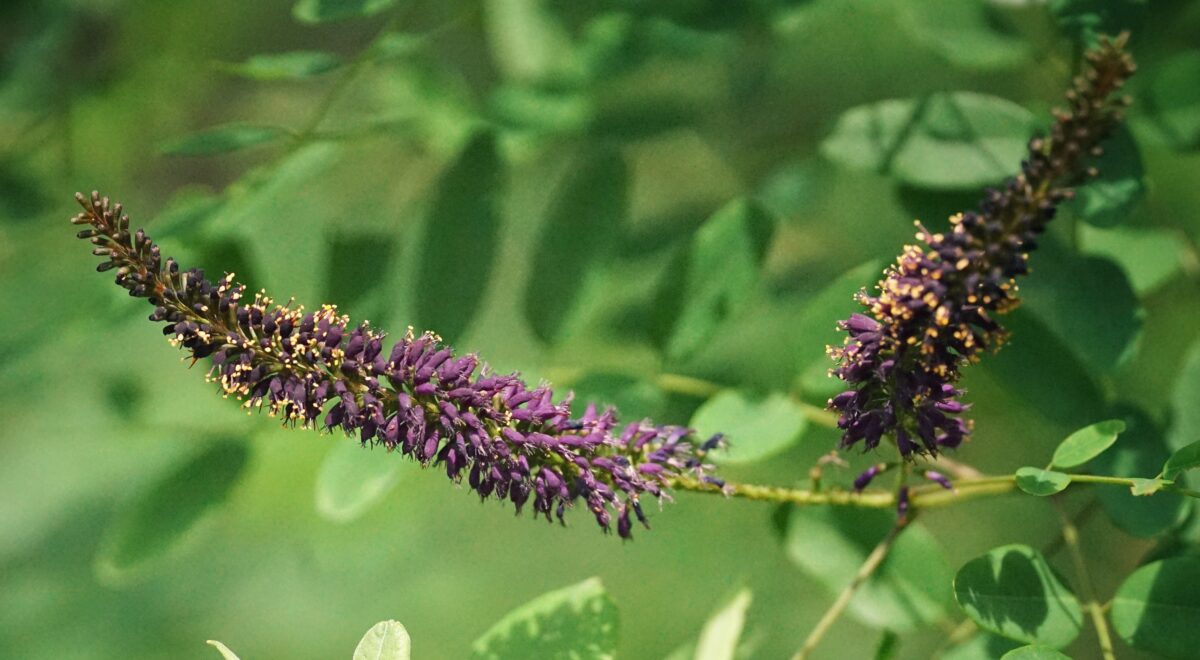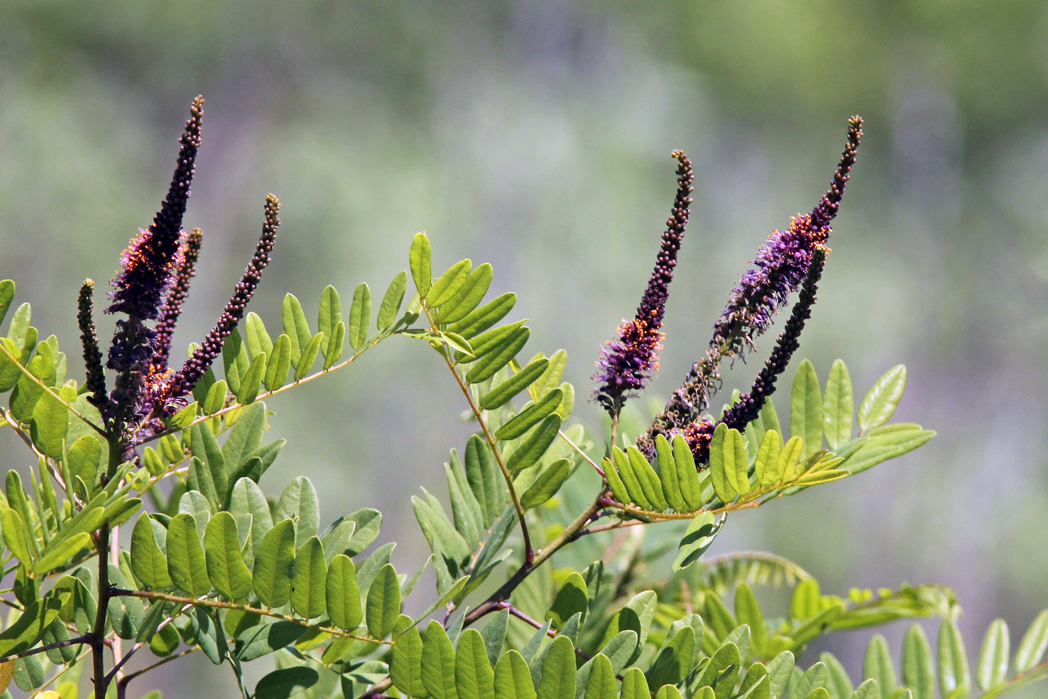False indigo
Pictured above: False indigo (Amorpha fruticosa) by Mary Keim. Click on terms for botanical definitions. View post as a PDF.
False indigo (Amorpha fruticosa) is a densely branched woody shrub with a striking spring and summer floral display. The tightly packed terminal spikes are comprised of many dark purple, one-petaled flowers that bear contrasting yellow to orange anthers. Leaves are alternately arranged and pinnately compound. Leaflets are elliptic with entire margins and are oppositely arranged on the leaf stalk. The leaves give the plant a feathery appearance. Seed pods are glandular and curved.
False indigo occurs naturally in alluvial forests, wet and coastal hammocks, cypress pond edges, and along stream and river banks. It attracts many pollinators and is a larval host for the Silver-spotted skipper (Epargyreus clarus), Southern dogface (Zerene cesonia) and Gray hairstreak (Strymon melinus) butterflies.

False indigo is also known as bastard indigo, bastard false indigo and desert false indigo. The genus name Amorpha comes from the Greek amorphos, or “without form,” and refers to the flowers having only one petal, unlike most flowers in the pea family.
Family: Fabeaceae (Legume, bean or pea family)
Native range: Throughout Florida
To see where natural populations of False indigo have been vouchered, visit florida.plantatlas.usf.edu.
Hardiness: 8A–10A
Soil: Moist to moderately dry soil
Exposure: Light to moderate shade
Growth habit: 4’–12’ tall
Propagation: Seed, cuttings
Garden tips: When in bloom, the combination of purple, orange and green gives false indigo a stunning and unusual appearance. It is extremely adaptable and does well in most landscapes. As it can get rather tall comparatively, it is best planted in the back of a mixed planting or as a screen or hedge. False indigo is deciduous, however, in more southern locations, it often performs as an evergreen.
False indigo plants are often available from nurseries that specialize in Florida native plants. Visit www.plantrealflorida.org to find a nursery in your area.

